Profile: Godzilla

Godzilla (Gojira) is a fictional Japanese giant monster. His first film was Ishiro Honda's 1954 film Gojira. Since then, he has made many more appearances and has become a pop-culture icon.
In total, Godzilla has appeared in 28 films, all of which were produced by Toho Company Ltd. Godzilla has also appeared in numerous comic books, video games, novels, and even an American remake.
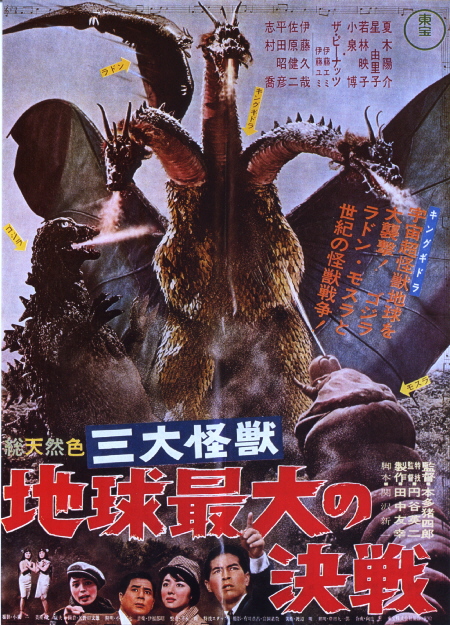
Gojira is a combination of two Japanese words: gorira ("gorilla"), and kujira ("whale"), which is fitting because in one planning stage, Godzilla was described as "a cross between a gorilla and a whale",[5] alluding to his size, power and aquatic origin. A popular story is that "Gojira" was actually the nickname of a hulking stagehand at Toho Studio.[6] The story has not been verified, however, because in the fifty years since the film's original release, no one claiming to be the employee has ever stepped forward and no photographs have ever surfaced. Godzilla's name was spelled in kanji as Gojira, but for sound only. (The meanings of the characters have no significance when combined). Many Japanese books on Godzilla have referenced this curious fact, including B Media Books Special: Gojira Gahô, published by Take-Shobo in three different editions (1993, 1998 and 1999).
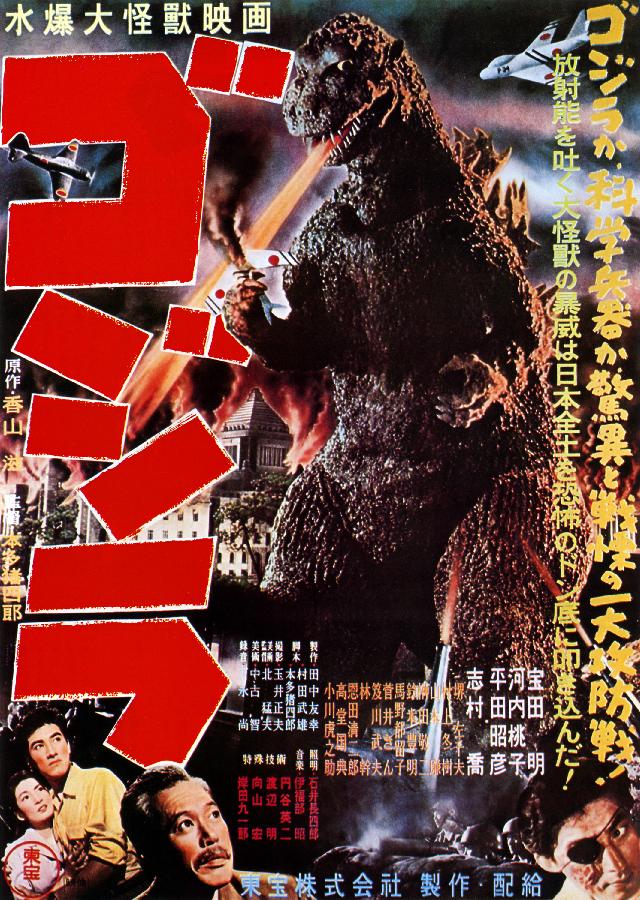
Godzilla's appearance has changed over the years, but many of his characteristics have remained constant. His roar has remained the same, only changing in pitch. Godzilla's approximate appearance, regardless of the design of the suit utilized for the creature, remains the same general shape, which is instantly recognizable: a giant, mutant dinosaur with rough, bumpy charcoal-gray scales, a long powerful tail, and jagged, bone-colored dorsal fins. Godzilla's iconic character design is a blended chimera inspired by various prehistoric reptiles, gleaned from children's dinosaur books and illustrations from an issue of Life magazine: Godzilla has the head and lower body of a Tyrannosaurus, a triple row of dorsal plates reminiscent of a Stegosaurus, the neck and forearms of Iguanodon and the tail and skin texture of a crocodile.[8][9] Godzilla's dorsal plates have themselves altered in size and appearance over the years.

Godzilla's body and facial structure changed often from film to film. The first films depicted the creature with a more feral head and facial structure, to indicate his status as a feared threat. As the character became more of a heroic figure – particularly to children, who became a large part of Godzilla's target audience from 1965 until 1978 in the Showa era – the creature's look was softened somewhat, and made to look more intelligent in order to reflect the change in Godzilla's role. When the Heisei era of films was produced, Godzilla's appearance was generally uniform. It was meant to show Godzilla as an implacable force of nature and was thus given a harder and more menacing quality. Godzilla's appearance was uniform in four out of the six films of the Millennium era, looking more wild. The creature was depicted as having human or near-human intelligence in most films. Godzilla was originally believed by many to be green when the original black and white film was produced, and promotional artwork in America and other English speaking countries depicted him as such. The creature was also depicted as being green in the Hanna-Barbera cartoon and a number of toys in the United States prior to the Trendmasters toy line, which depicted Godzilla in his actual coloration. Godzilla actually has a greenish hue in Godzilla 2000 and again in Godzilla vs. Megaguirus, but returns to his classic charcoal gray in subsequent films in the Millennium series starting with Godzilla, Mothra and King Ghidorah: Giant Monsters All-Out Attack.
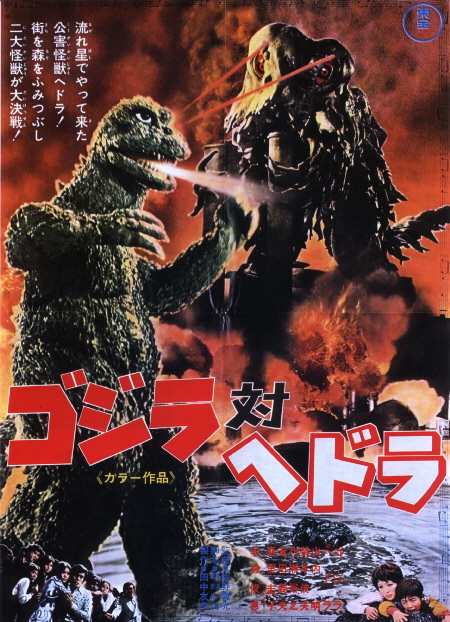
Although his origins vary somewhat from film to film, he is always described as a prehistoric creature, who first appeared and attacked Japan at the beginning of the Atomic Age. In particular, mutation due to atomic radiation is presented as an explanation for his size and powers. The most notable of Godzilla's resulting abilities is his atomic breath: a powerful heat ray of thermonuclear energy that he is able to fire from his mouth. Godzilla is also depicted as being resistant to damage thanks to a tough hide and an advanced healing factor, which itself became a focal point in Godzilla vs. Biollante and Godzilla 2000. He is portrayed as being strong and dexterous, sometimes utilizing martial arts techniques in combat. Described as a transitional form between aquatic and terrestrial vertebrates in the original film, Godzilla is able to survive in the ocean for indefinite periods of time and is as adept a fighter underwater as he is on land.
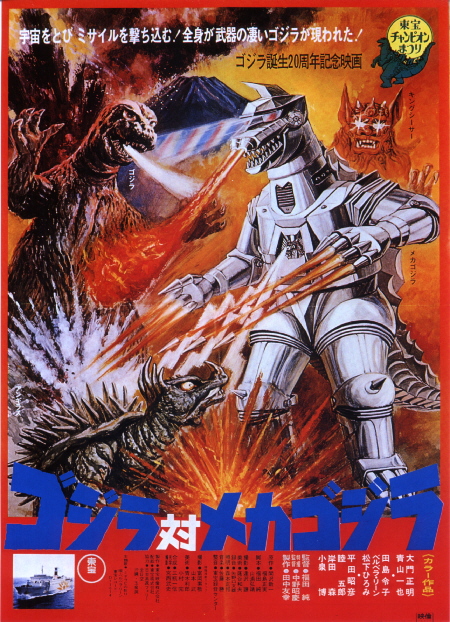
These particular abilities are portrayed consistently among Godzilla's many incarnations, though he also possesses skills, often employed as weapons of last resort that are only seen on rare occasions, such as his nuclear pulse, an unnamed wave of nuclear energy that can be pumped directly into a foe (as seen in the climax of his battle with Orga in Godzilla 2000), magnetic powers, and even the ability to fly.
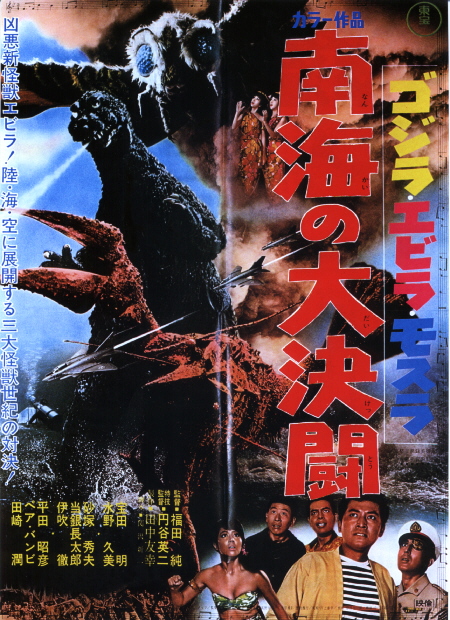
Here they all are in order of appearance :D
Anguirus
Baby Godzilla
Baragon
Battra
Biollante
Destroyah
Ebirah
Fire Rodan
Gabara
Giant Condor
Gigan
Godzilla Jr
Godzilla
Gorosaurus
Hedorah
Jet Jaguar
Kaiser Ghidorah
Kamacuras
King Caesar
King Ghidorah
King Kong
Kiryu
Kumonga
Little Godzilla
M.O.G.U.E.R.A.
Manda
Mechagodzilla
Mechagodzilla 2
Mecha-King Ghidorah
Megaguirus
Megalon
Minya
Monster X
Mothra
Oodako
Orga
Rodan
Space Godzilla
Titanosaurus
Varan
Zilla
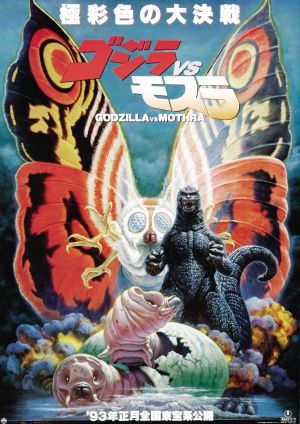
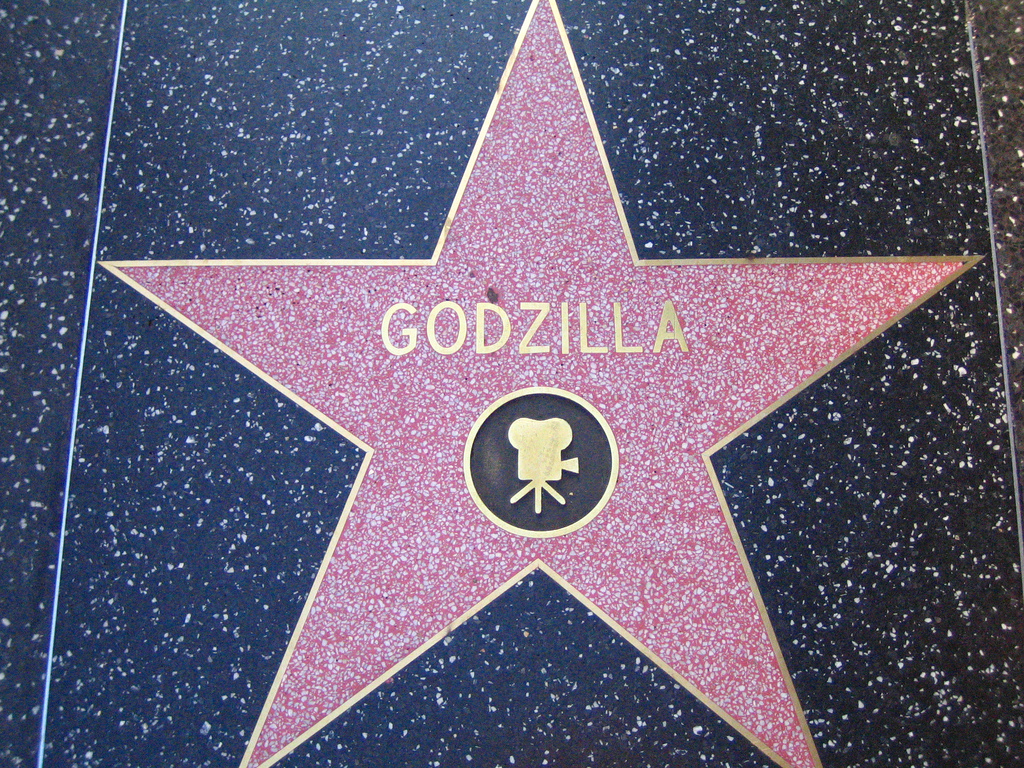
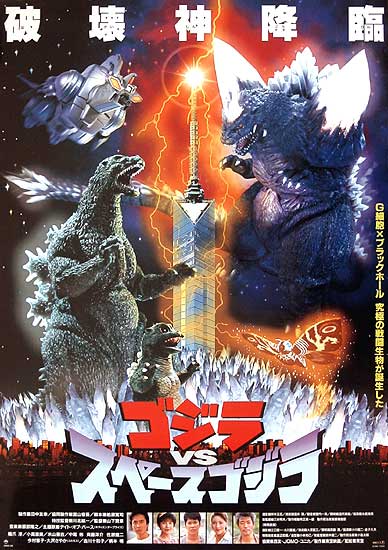
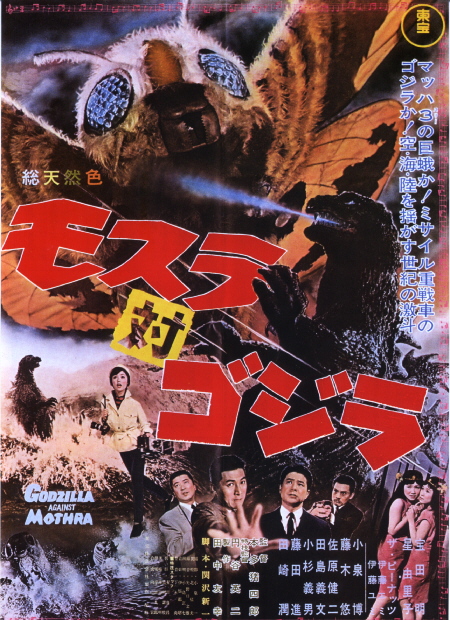
|
1
|

|
|
0
|

|
|
|
DCF
3/30/2010
DISCLAIMER: This posting was submitted by a user of the site not from Earth's Mightiest editorial staff. All users have acknowledged and agreed that the submission of their content is in compliance with our Terms of Use. For removal of copyrighted material, please contact us HERE.